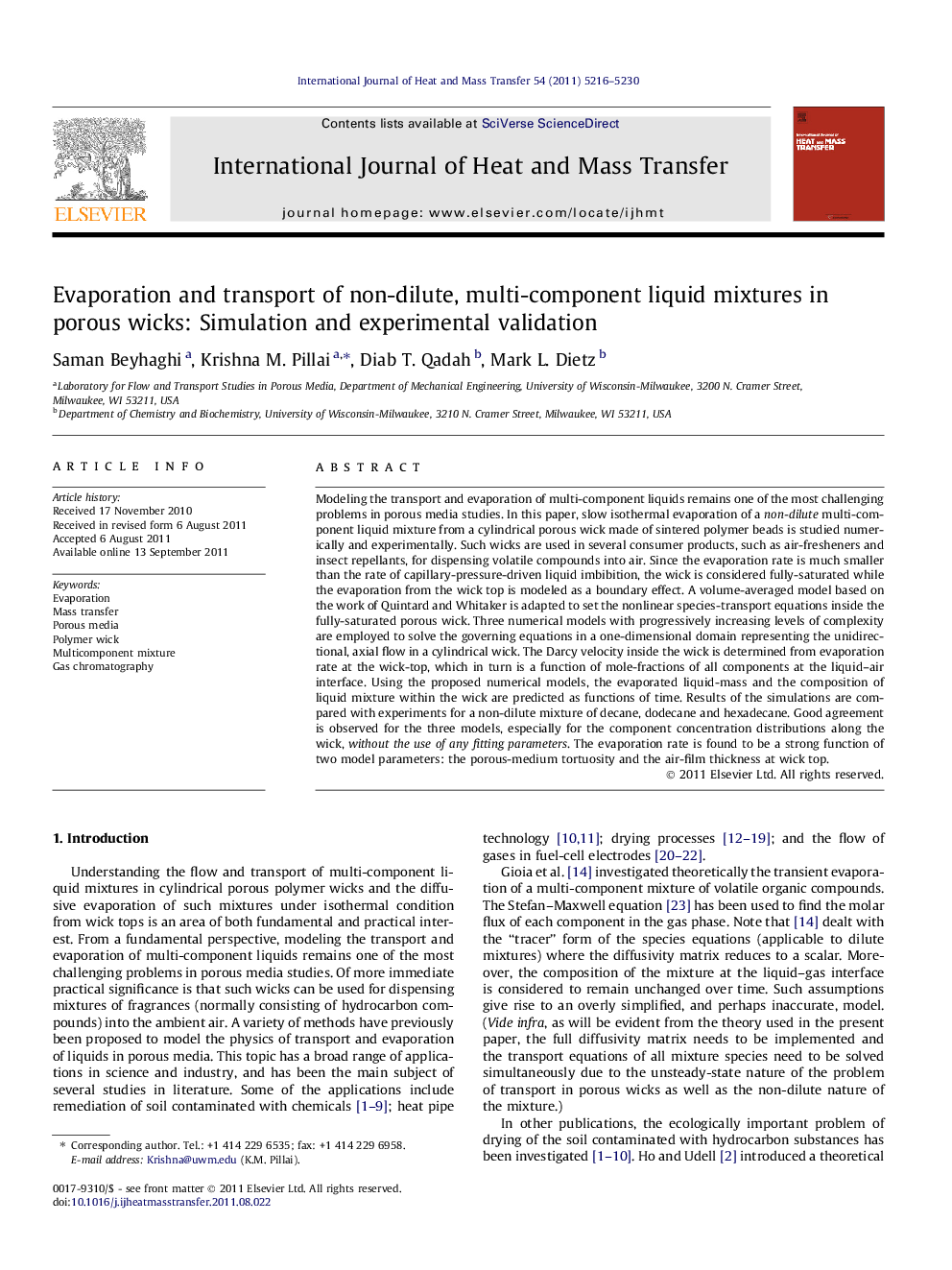| کد مقاله | کد نشریه | سال انتشار | مقاله انگلیسی | نسخه تمام متن |
|---|---|---|---|---|
| 659363 | 1458101 | 2011 | 15 صفحه PDF | دانلود رایگان |
عنوان انگلیسی مقاله ISI
Evaporation and transport of non-dilute, multi-component liquid mixtures in porous wicks: Simulation and experimental validation
دانلود مقاله + سفارش ترجمه
دانلود مقاله ISI انگلیسی
رایگان برای ایرانیان
کلمات کلیدی
موضوعات مرتبط
مهندسی و علوم پایه
مهندسی شیمی
جریان سیال و فرایندهای انتقال
پیش نمایش صفحه اول مقاله

چکیده انگلیسی
Modeling the transport and evaporation of multi-component liquids remains one of the most challenging problems in porous media studies. In this paper, slow isothermal evaporation of a non-dilute multi-component liquid mixture from a cylindrical porous wick made of sintered polymer beads is studied numerically and experimentally. Such wicks are used in several consumer products, such as air-fresheners and insect repellants, for dispensing volatile compounds into air. Since the evaporation rate is much smaller than the rate of capillary-pressure-driven liquid imbibition, the wick is considered fully-saturated while the evaporation from the wick top is modeled as a boundary effect. A volume-averaged model based on the work of Quintard and Whitaker is adapted to set the nonlinear species-transport equations inside the fully-saturated porous wick. Three numerical models with progressively increasing levels of complexity are employed to solve the governing equations in a one-dimensional domain representing the unidirectional, axial flow in a cylindrical wick. The Darcy velocity inside the wick is determined from evaporation rate at the wick-top, which in turn is a function of mole-fractions of all components at the liquid-air interface. Using the proposed numerical models, the evaporated liquid-mass and the composition of liquid mixture within the wick are predicted as functions of time. Results of the simulations are compared with experiments for a non-dilute mixture of decane, dodecane and hexadecane. Good agreement is observed for the three models, especially for the component concentration distributions along the wick, without the use of any fitting parameters. The evaporation rate is found to be a strong function of two model parameters: the porous-medium tortuosity and the air-film thickness at wick top.
ناشر
Database: Elsevier - ScienceDirect (ساینس دایرکت)
Journal: International Journal of Heat and Mass Transfer - Volume 54, Issues 25â26, December 2011, Pages 5216-5230
Journal: International Journal of Heat and Mass Transfer - Volume 54, Issues 25â26, December 2011, Pages 5216-5230
نویسندگان
Saman Beyhaghi, Krishna M. Pillai, Diab T. Qadah, Mark L. Dietz,